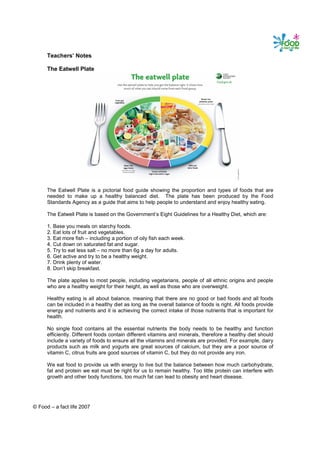The Eatwell Plate provides guidelines for a healthy, balanced diet by depicting the main food groups and recommended proportions of intake. It recommends basing meals around starchy foods, eating plenty of fruits and vegetables, consuming fish regularly including oily fish once per week, limiting salt, sugar and saturated fat, staying active and drinking enough fluids. Achieving an overall balance of foods from the five major groups - starchy foods, fruits and vegetables, dairy, proteins, and foods high in fat/sugar - is important for obtaining essential nutrients and maintaining good health.





